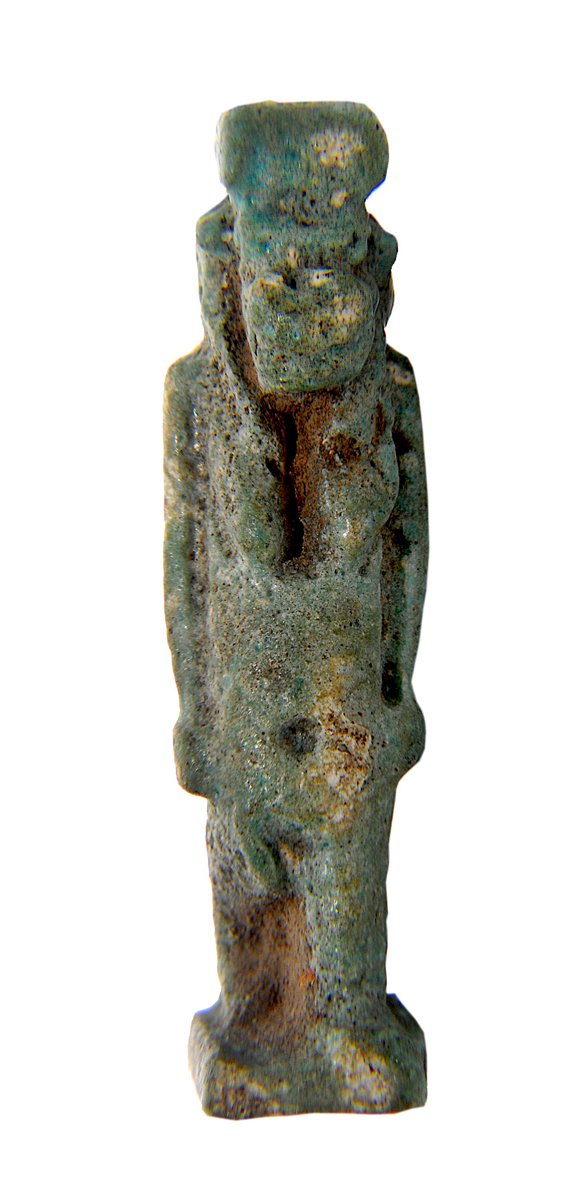
The Goddess Taweret (Thoeris)
Egyptian Art
| Place of production | Egypt |
|---|---|
| Date | 1550–1069 B.C. |
| Object type | architecture |
| Medium, technique | Limestone |
| Dimensions | 60 x 73 x 9 cm (23 5/8 x 28 3/4 x 3 9/16 in.) |
| Inventory number | 51.2146 |
| Collection | Egyptian Art |
| On view | Museum of Fine Arts, Basement Floor, Ancient Egypt, Temples and gods |
Perhaps once forming part of a tomb wall, this limestone fragment is decorated in raised relief and inscribed in sunken relief, however, its surface is badly damaged. In a chapel decorated with a ureus-frieze, the figure of Osiris – sitting on a throne – is represented with his wife Isis standing behind him. Osiris is depicted with the classical iconography of the dead gods, i.e., as a mummified man holding a crook and a flail in his hands. He wears ram’s horns with double feathers and a sun disc on the top of his head. In front of the god is a lotus flower – the symbol of rebirth – on which four mummiform deities, the Four Sons of Horus are represented: the human-headed Imset, the ape-headed Hapy, the jackal-headed Duamutef and the falcon-headed Qebehsenuef. According to the myth, these four gods recollected and restored the bodily parts of Osiris dismembered by his brother, Seth. The deceased, whose name is not preserved only his title, “royal scribe”, is standing on the other side of the offering table. Today only his legs and the lower part of his kilt are visible.
This record is subject to revision due to ongoing research.